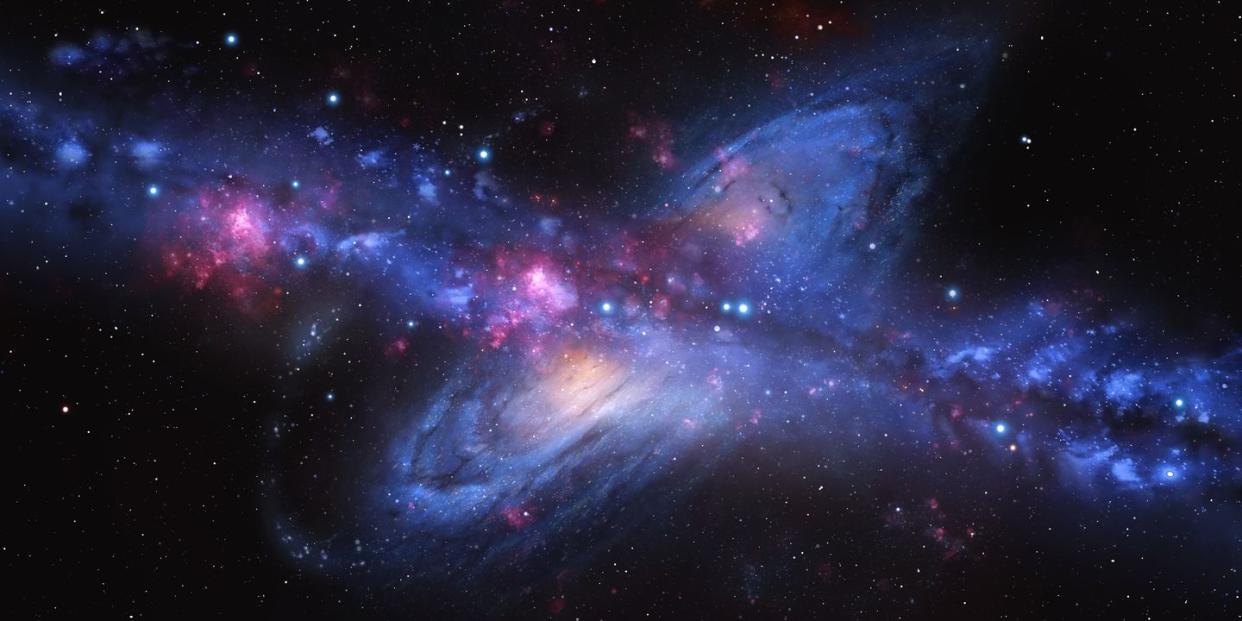The Universe Might Be 2 Billion Years Younger Than We Thought

The exact age of the universe has long been up for debate. A new entrant into that debate claims the universe is significantly younger than previous estimates.
Scientists used what's known as "gravitational lensing" to track the movement of stars through their gravitational field's distortion, causing them to bend light.
The scientists caution that they only had access to two gravitational lenses. There's a large margin for error here.
Researchers at the Max Planck Institute in Germany now believe that the universe is actually 2 billion years younger than we previously thought. Based on observations noting the universe's recent rapid expansion, the scientists think the universe is under 12 billion years old, not 13.8 billion.
While the one star in view of Earth, the sun, appears to be stationary, stars actually slowly move just like almost any other astronomical entity. Astrophysicists are able to roughly date the universe by keeping a close record of the movement of stars, which they put into a number known as the Hubble constant (Ho), initially laid out by Edwin Hubble. It's seen as one of the most fundamental numbers in the study of astronomy; Harvard professor John Huchra once called it "arguably the most important cosmological discovery ever made."
The team at Max Planck found that the constant is rising. The earlier estimate correlating to 13.8 billion years had a Hubble constant of 70. The new number, associated with the universe being under 12 billion years old, is 82.4. But there are still a lot scientists are trying to determine. The scientists caution that even this new number could be off by billions of years.
"We have large uncertainty for how the stars are moving in the galaxy," says lead study author Inh Jee, of the Max Plank Institute in Germany, in a press statement.
Jee's team used what's known as gravitational lensing, which shows that mass bends light, as first predicted with Einstein's theory of relativity. The gravitational field of a large object in space, like a star or a planet, will bend incoming light. Because these large bodies have gravitational fields that extend into space (like how Earth can also control the moon), incoming light can get refracted at a large distance. That can distort large regions of space. The bigger the object, the more dramatic the bending.
The team used a specific variety of gravitational lensing, known as time delay lensing. According to the Max Planck team, time delay lensing uses the "changing brightness of distant objects to gather information for their calculations."
Jee and her team have entered a debate about the universe's age that has been going on for years. A European team came up with a Hubble constant number of 67 in 2013, while earlier this year, NASA scientists came up with a constant of 74. The newest calculation is noticeably larger than any other estimate.
The age of something as massive and multifaceted as the universe is difficult to ascertain, to say the least. Jee admits her team's number comes with a caveat. Their number came from using only two gravitational lenses, which were all that were available. That means the team's margin of error is big enough to include the possibility that the universe might actually be older than calculated, not noticeably younger.
"Observations of more lensing systems will be required to narrow down the value" of the Hubble constant, the scientists say in the paper's abstract. In other words, the more data on the universe, the more scientists will be able to determine its age. Good thing thing it looks like the James Webb Space Telescope is finally coming.
You Might Also Like

